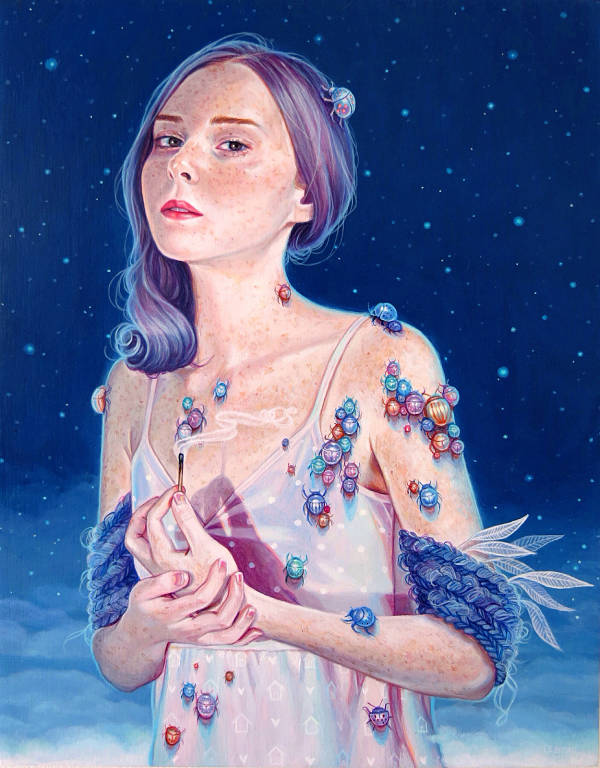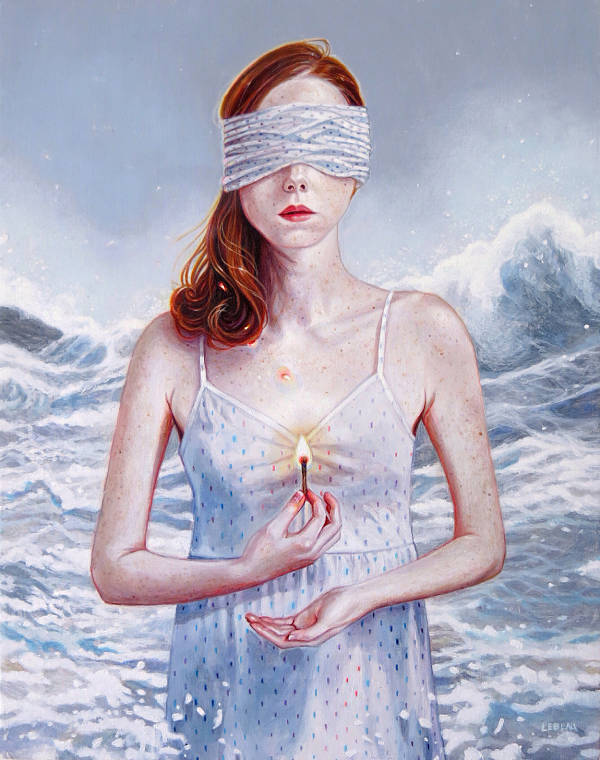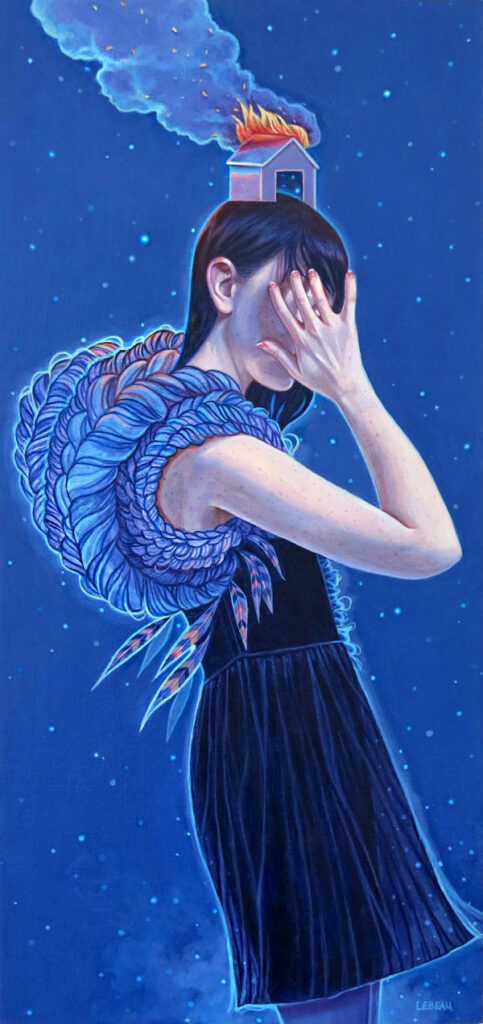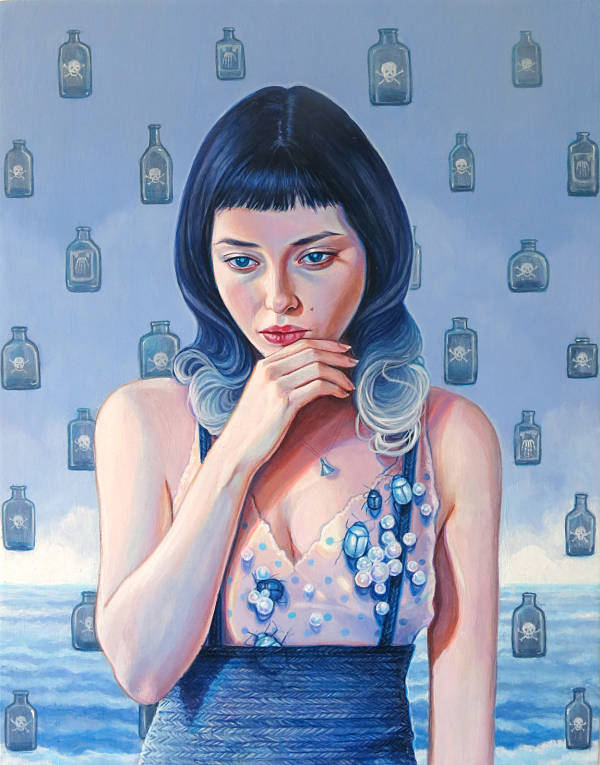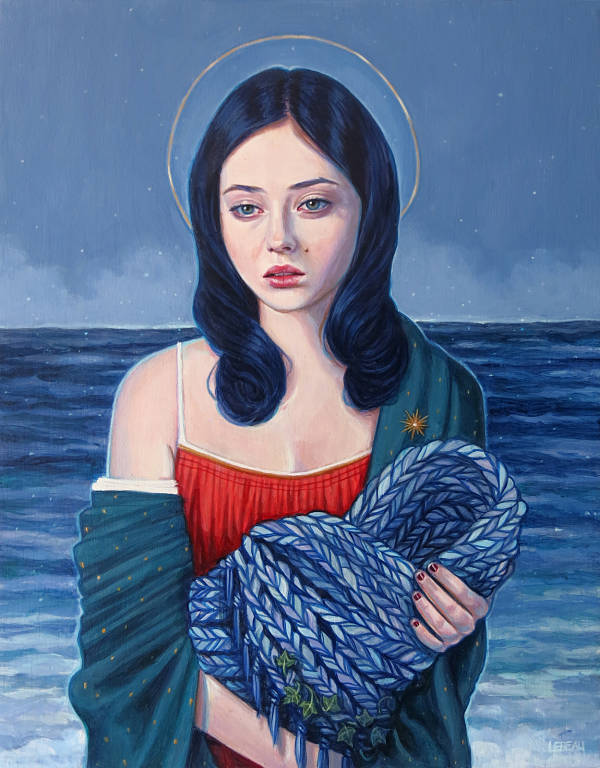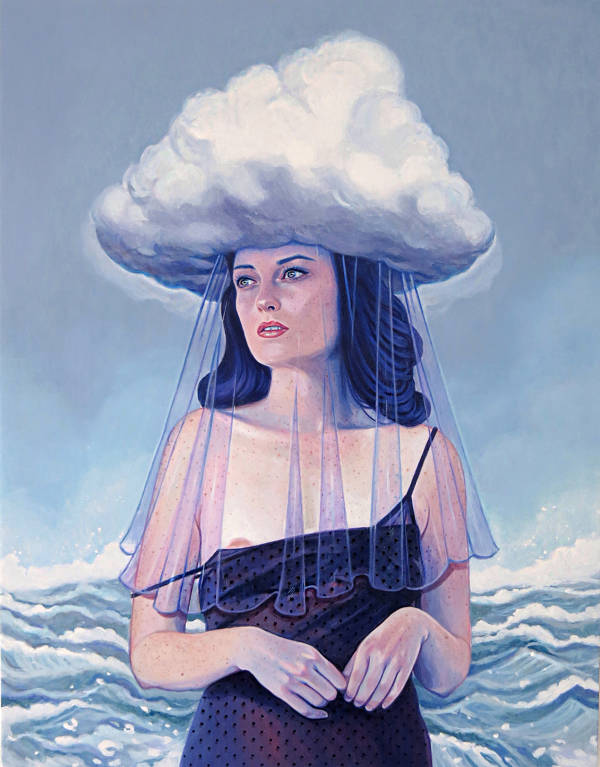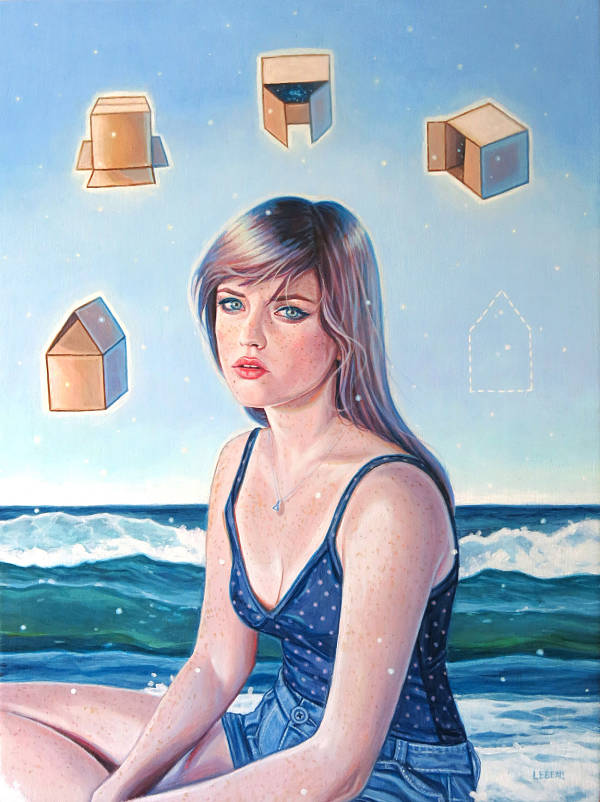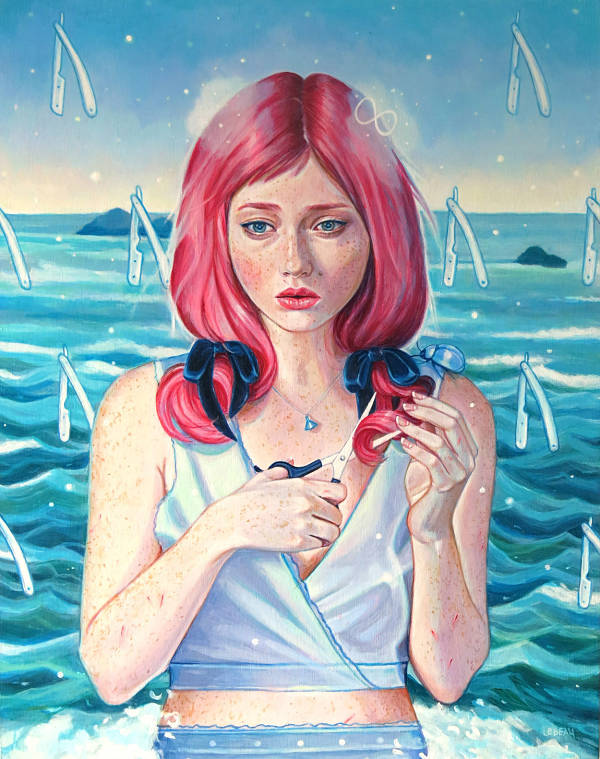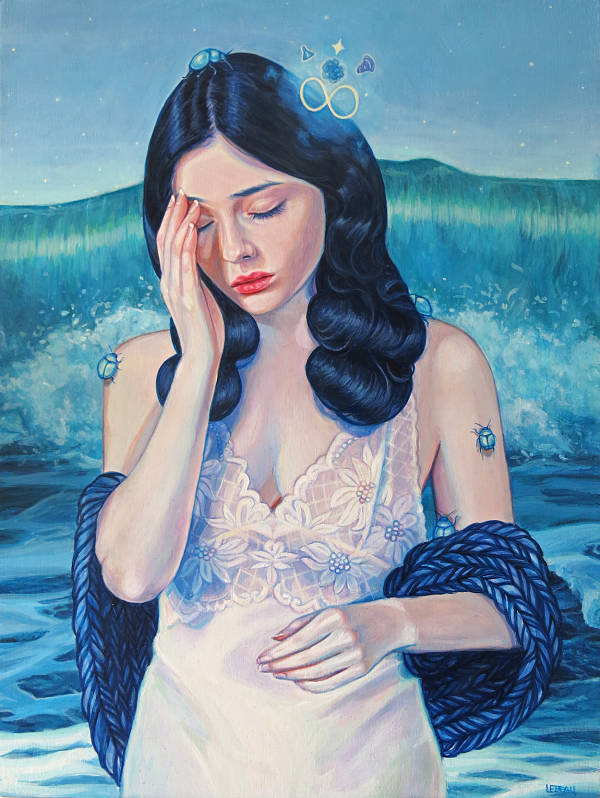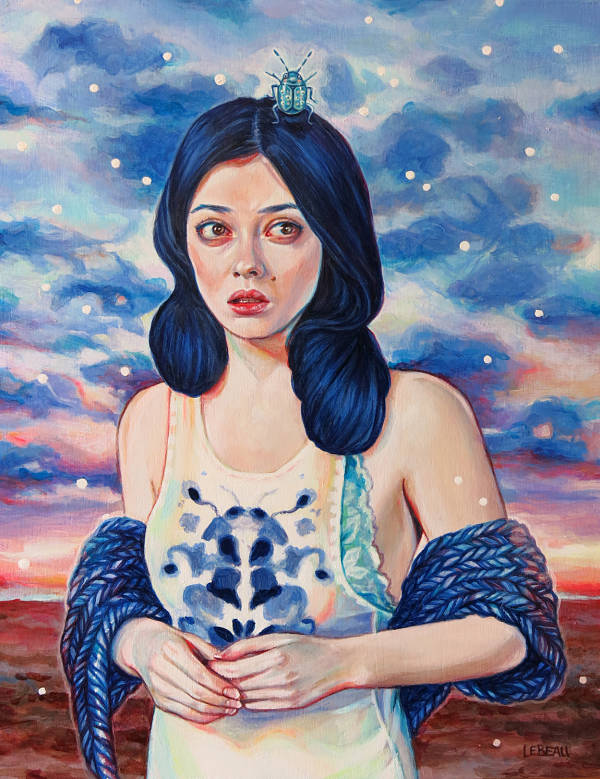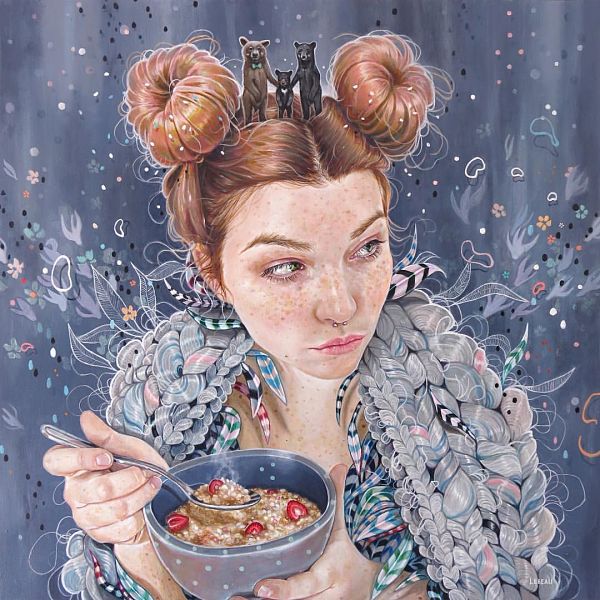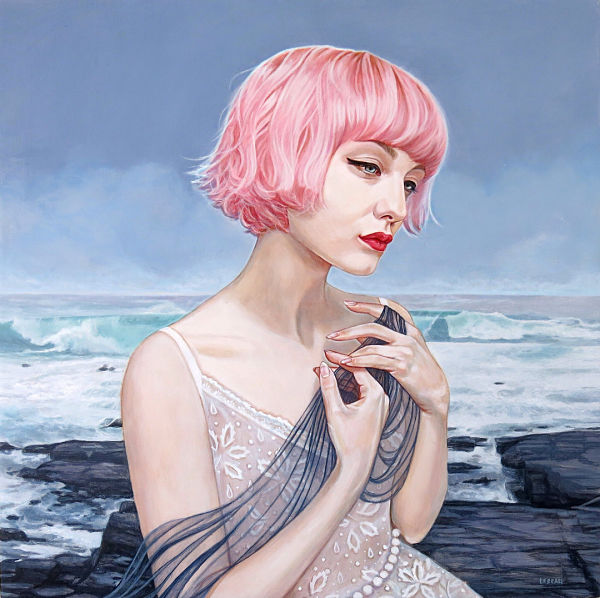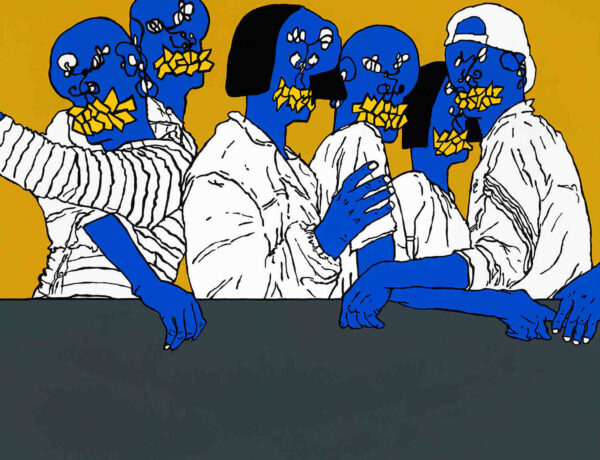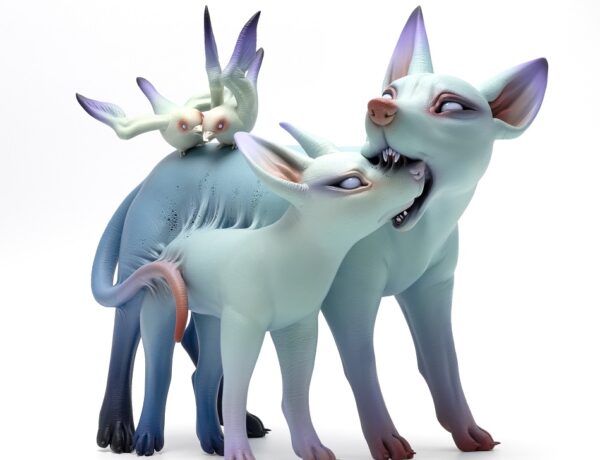There is something ethereal and peaceful in the work of Canadian portrait artist Edith Lebeau. Yet, we can guess that beyond the placid, icon-looking beauty of her models, their minds are certainly far from rest.
Indeed, Edith’s symbolism leads us to contemplate the loud chaos of our own mind, recreated on the canvas by the constant intensity of the ocean, the silent horror of ordinary objects, the soft dangerousness of insects or even by her use of haunting blue shades. The painter’s heroines (and ourselves) may lose some marbles and feel blue, but somehow, they (we) find control and relief in the materialization of our most visceral fears.
To explore the fascinating outlook of Edith Lebeau, we chatted with her about going crazy over her art…
Edith, how did you become a painter and especially a portrait painter?
I’ve been drawing girl characters and woman faces since I was a kid. I loved creating their makeup and draw them colorful outfits. As a kid, I thought I wanted to become a fashion designer but really I had more fun creating the woman wearing the clothes than the clothes. I had painting classes on the weekend as a kid and I loved it. My dad had all those great mediums at home I could try as he has studied art when he was younger. So, during summer, we would paint together. After high school ended, I decided to study Fine Arts, because I had no real skills other than art and I was not sure of what I wanted to do in life. But that is where it really became clear that what I wanted to do was painting portraits. My skills grew but it was only after I ended my Bachelor degree and started working on my art full time years later that my art and voice became closer to where they are now. I ended my Bachelor in 2004 and started to show in galleries in 2009.
What were your references and sources of inspiration while learning your art and what are they now? What would you say about the evolution of your style, your technique and how you perceive your craft?
As a kid and at art school my inspirations were mostly music and cinema. I would draw and paint mostly images of actresses and movies that I took from magazines or of the internet. It was mostly about painting someone that I found pretty and trying to render them the best I could. Art school is where I started to render emotions through my pieces.
The emotions in my pieces became more important than the rest once I started to concentrate more on my work and paint full time. The emotion and the character’s eye contact with the viewer became the center of my work. My technique changed, it became more and more realistic, then a bit more surrealistic and, now, it’s more about mental health awareness and trying to help others not to feel alone, through my art.
Portraits usually tell a lot about the human beings pictured in them, but yours seem to have deeper, wider story-telling attached to them: who are the heroines you are painting and what do they want to tell us?
They want to tell you that sometimes everything is not what it seems. Sometimes everything seems perfect but if you look close enough you see that it’s not what it appears to be.
They also want to tell you that you are not alone even if it seems you are.
Some of my heroines are suffering in plain sight others seem all pretty and perfect but there are clue in the pieces that shows that the character is hiding something.
As I said, my work is about mental health.
My portraits acts pretty much as a mirror, in some ways. People tend to see what they want to see and create a story in their mind with what they have dealt with themselves.
How do you select your models: are they friends, muses from internet or models you are collaborating with? What attract you in their features or personalities?
I started with my friends but after painting the same people over and over, you need some new material at some point, so I started to paint other artists that I look up to and who inspire me. So, the internet is a great tool for that. I also work with professional models. I found some of them through Facebook and some on Instagram. Either they are professional models or not, the models I work with have to be able to express a feeling, a particular emotion that will help create the piece. I love all the models I worked with. They are all really inspiring. Without them, my work would not be what it is. I owe a lot to all of them.
Your paintings are usually linked to the theme of mental illness: can you tell us why raising awareness on it is important to you?
Yes, mental health is the base of my work. It’s a cause that is close to my heart. I’ve written a status on my social medias a while ago that I think explains my point of view on the subject. It goes something like this:
“So many people are suffering in silence. Our psychological health is our foundation yet it’s still not taken seriously by too many.
When we have pain in our body we go see a doctor. It should be as easy and simple for mental health. I think it is important to sensitize people to that subject because stigma can prevent people with mental illness from getting the help they need.
I can’t do much, I’m not a psychologist, I’m just an artist. But I can paint relatable stuff to people who are in pain or have dealt with it or know someone who is.Yes, that cause touches me probably because I have mental health issues and know so many people who are dealing with it too. I’ve been dealing with anxiety disorders for years now. It got worse, than better. I’ve had ups and downs. I had to face things and accept things but I had help and empathy from friends. Not everyone has my luck. Empathy is the key here I think. And in some way it’s kind of what I offer here.
I hope that one day it will be easier for people who are suffering to talk about their problems without the fear of being judged.
Do not judge, listen.”
So, with my work I hope I can touch people and help them not to feel alone. Because it is one of the worst feeling.
How (and why) do you select the specific disorders illustrated in your paintings?
Well, some are based on my experiences others from what I’ve seen. I’ve been painting the disorders or fears that haunts me the most I guess or the ones that I am still dealing with at the time I’m doing the particular piece. Sometimes it’s just about remembering a particular event or feeling. And of course it’s cathartic. It helped me understand myself more.
Do the blue shades of your artworks and their ocean settings are related to mental illness or is it a personal creative choice?
From when I started to paint about mental health to now, I worked on developing my own recurring symbols and stories, like the bugs, the upside down funnel, the ocean, the tiny houses, the knitted fabric, etc.
As for the colors, they also evolved but in an unconscious way. I don’t think that I was ever able to know what color a particular piece would end up being. I have a vague idea of certain parts of the piece but the overall palette… no idea. It’s the part that evolves while I work. Every detail is precise in my work: the theme, the symbols, the model, the drawing… but the colors are always an enigma for me. As if I was unable to control that part of my work… and it’s fine.
I’ve realise that lately, when working on a more dark themed piece, the colors ended up brighter and so my palette became more pastel since a couple of years ago: since working on mental health. But that is not conscious.
As for the ocean, it became a symbol since my solo at Modern Eden in 2016. The ocean can mean different things depending on the piece but the 2 recurring meanings are loneliness or solitude and fear (or facing our fear).
For me there is something about a grey day at the (none crowded) beach that makes me feel alone in the world with a certain sense of nostalgia. The only thing that you can hear is the sound of the waves and the wind. For certain pieces, the heroines are left alone with their emotions and I thought that the ocean would add to that feeling.
As for the fear, not that I’m afraid of water, I’m actually not. I love the ocean. But, every time there is water in my dreams something bad happens. So I decided to use it.
What are your upcoming projects (exhibitions/solo shows/paintings/creative ambitions)?
My next solo show will be at Thinkspace gallery in LA in late fall 2020. I’m super excited as my last solo show was in 2016. It will be my first solo in Los Angeles! The general theme will be “Obsessive compulsive disorder / or the general fear of going crazy”. So, once again, it will focus on mental health. It will involve lots of bugs, haha!
Edith Lebeau Social Media Accounts
Facebook | Instagram | Twitter



